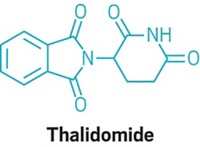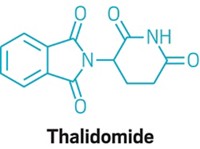Advertisement
Grab your lab coat. Let's get started
Welcome!
Welcome!
Create an account below to get 6 C&EN articles per month, receive newsletters and more - all free.
It seems this is your first time logging in online. Please enter the following information to continue.
As an ACS member you automatically get access to this site. All we need is few more details to create your reading experience.
Not you? Sign in with a different account.
Not you? Sign in with a different account.
ERROR 1
ERROR 1
ERROR 2
ERROR 2
ERROR 2
ERROR 2
ERROR 2
Password and Confirm password must match.
If you have an ACS member number, please enter it here so we can link this account to your membership. (optional)
ERROR 2
ACS values your privacy. By submitting your information, you are gaining access to C&EN and subscribing to our weekly newsletter. We use the information you provide to make your reading experience better, and we will never sell your data to third party members.
Biochemistry
Arsenite-induced necroptosis requires stress granules
Process also depends on proteins that localize in stress granules
by Celia Henry Arnaud, special to C&EN
March 22, 2023
| A version of this story appeared in
Volume 101, Issue 10

Oxidative stress can trigger a type of programmed cell death called necroptosis. According to a new study, the environmental pollutant arsenite can induce necroptosis, but the process requires the presence of stress granules—subcellular domains that store stalled translation machinery in stressed cells (Sci. Signal. 2023, DOI: 10.1126/scisignal.abq0837).
Although stress granules are necessary for arsenite-induced necroptosis, their formation isn’t enough to trigger the process. Two other proteins—Z-DNA-binding protein 1 (ZBP1) and receptor-interacting protein kinase 3 (RIPK3)—are also required. Without ZBP1, the cells can’t sense that they need to start necroptosis, says virologist Bertram L. Jacobs of Arizona State University, who led team that carried out the study.
But most cells, including the ones that the researchers used in the study, don’t normally produce ZBP1. The researchers used interferon, a protein associated with inflammation, to induce the production of ZBP1. How the need for interferon plays out in contexts other than cell culture is unclear, Jacobs says, but he doesn’t see it as a limitation. “Lots of things induce interferon,” he says.
The researchers used fluorescently labeled antibodies to show that RIPK3 and ZBP1 localize to stress granules. RIPK3 phosphorylates the protein that’s ultimately responsible for poking holes and rupturing the cell membrane, the final step in necroptosis. The researchers think that ZBP1 recruits RIPK3 to stress granules, since the latter was not found in the granules unless ZBP1 was present.
Arsenite is probably not the only way to induce such a necroptotic response, Jacobs says. “We believe that any oxidative stressor will give you the same response,” Jacobs says. For example, some cancer drugs can cause oxidative stress, and oxidative stress is a component of many processes involved in aging.
“We think this oxidative-induced necroptotic cell death is important in Alzheimer’s disease. It may be important in cancer treatment,” Jacobs says. “We think this can open up new ways of thinking about how different diseases occur and how we might treat different diseases.”
The dependence upon interferon to induce production of ZBP1 is reminiscent of some cancer treatments. “The combination of interferon-α and arsenite has been used in patients with certain cancers with good effect for several years, underscoring the rationale for this study,” Douglas R. Green, who studies mechanisms of cell death at St. Jude Children’s Research Hospital, writes in an email. “Arsenite in combination with interferon as a cancer treatment promotes anti-cancer immunity, and necroptosis is known to be very good at promoting such immunity. The findings in this paper may help to understand this and point the way towards predicting the efficacy of such treatment.”





Join the conversation
Contact the reporter
Submit a Letter to the Editor for publication
Engage with us on Twitter